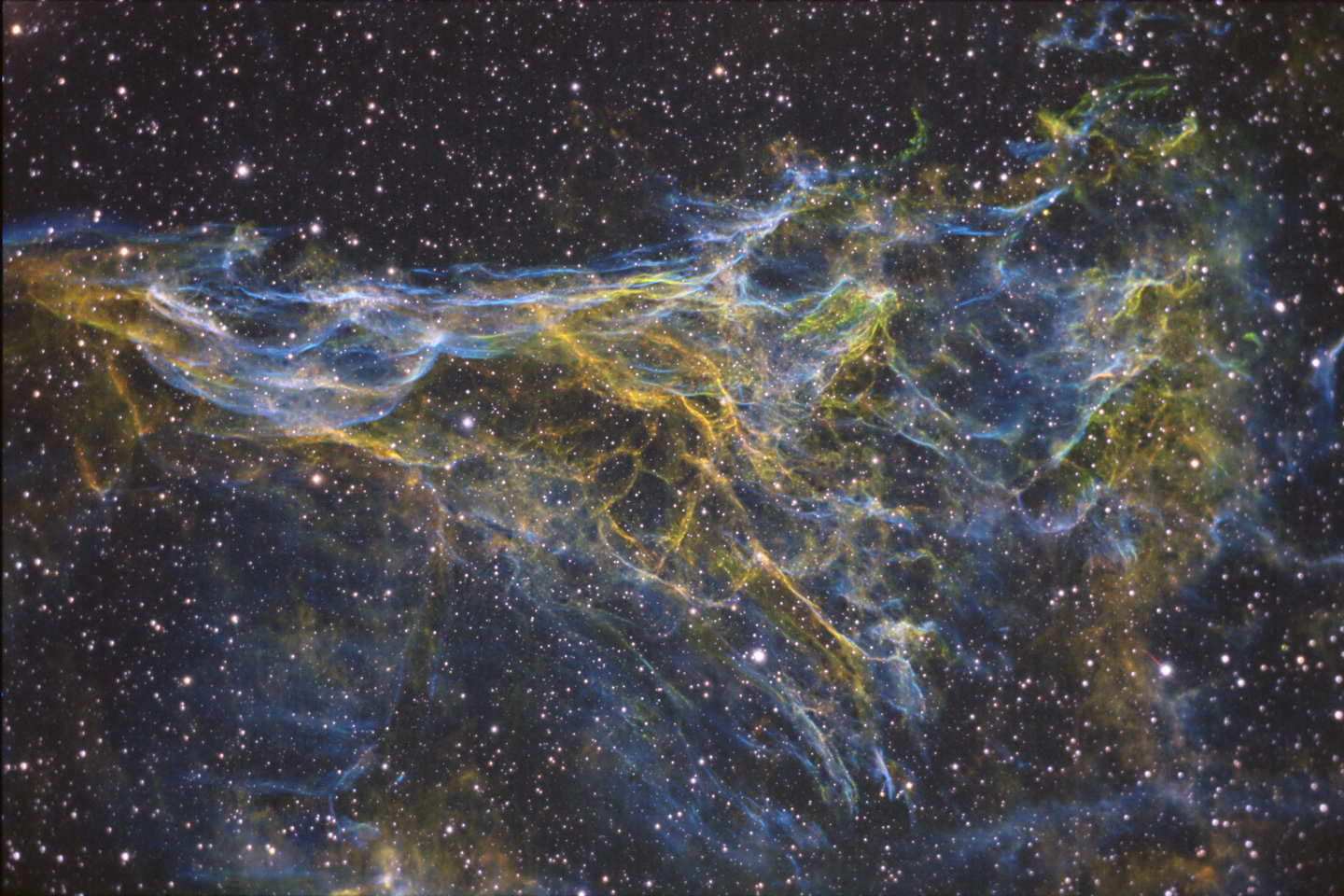Optics/mount : 12″ACF 2.7m AP-Reduzer Alt-5
Camera/filters: Atik 11002 AstrodonHa/OIII/SII
Exposure:12×600 Ha, 7×600 OIII/SII all2bin
03 September 2014
The Veil Nebula is a cloud of heated and ionized gas and dust in the constellation Cygnus. It constitutes the visible portions of the Cygnus Loop (radio source W78, or Sharpless 103), a large but relatively faint supernova remnant. The source supernova exploded some 5,000 to 8,000 years ago, and the remnants have since expanded to cover an area roughly 3 degrees in diameter (about 6 times the diameter, or 36 times the area, of the full moon). The distance to the nebula is not precisely known, but Far Ultraviolet Spectroscopic Explorer (FUSE) data supports a distance of about 1,470 light-years.
In modern usage, the names Veil Nebula, Cirrus Nebula, and Filamentary Nebula generally refer to all the visible structure of the remnant, or even to the entire loop itself. The structure is so large that several NGC numbers were assigned to various arcs of the nebula.[4] There are three main visual components:
The Western Veil (also known as Caldwell 34), consisting of NGC 6960 (the “Witch’s Broom”, “Finger of God”, or “Filamentary Nebula”) near the foreground star 52 Cygni;
The Eastern Veil (also known as Caldwell 33), whose brightest area is NGC 6992, trailing off farther south into NGC 6995 and IC 1340; and
Pickering’s Triangle (or Pickering’s Triangular Wisp), brightest at the north central edge of the loop, but visible in photographs continuing toward the central area of the loop.@wikipedia
Le Triangle de Pickering se trouve quant à lui au nord-ouest de la nébuleuse. Comme son nom l’indique en partie, il s’agit d’un triangle filamenteux allongé en direction du sud sur environ 45 minutes d’arc (pour une base de 25′ de largeur). Il partage avec la Petite Dentelle la désignation de NGC 6960. Le Triangle de Pickering se prolonge par un long filament de plus de deux degrés de long.
